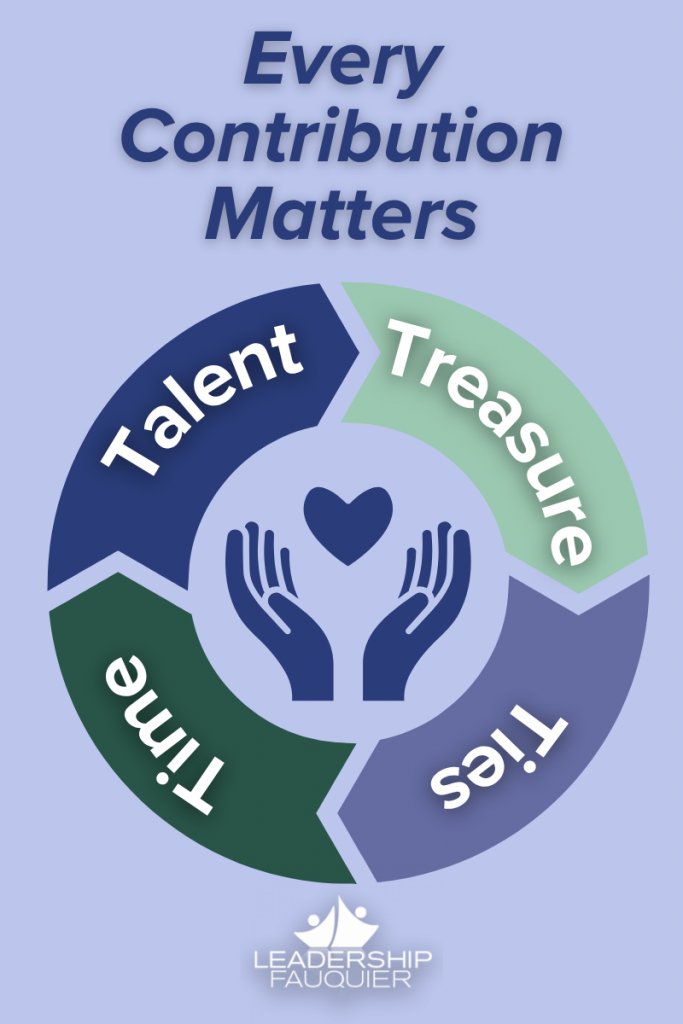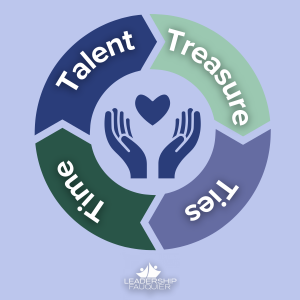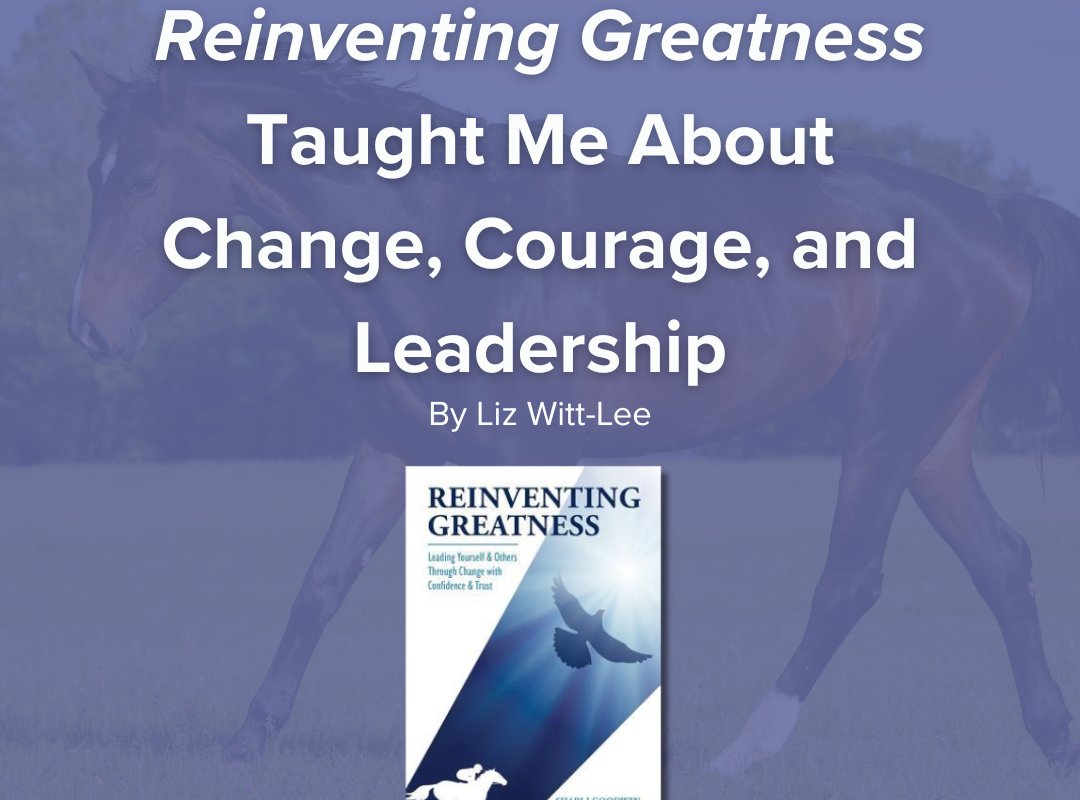The Four T’s of Charitable Giving

When we think about giving back to non-profits, we often focus on monetary donations. But there are so many ways we can help non-profits (like Leadership Fauquier!).
Non-profits need four kinds of support from their community:
- Time
- Talent
- Treasure
- Ties
What does that mean? Monetary support falls under the treasure umbrella. We need volunteers to give their time and talents. And connecting us with new supporters and resources help us grow. Let’s dive into this a little bit more.
Time
When you volunteer for an organization and provide both your energy and your physical presence, you are giving time. At Leadership Fauquier, for example, you might share your time by:
- Volunteering at a program day
- Joining a committee such as alumni engagement, sponsorship, or fundraising
- Speaking at a session
- Helping at a community outreach event
- Attending alumni gatherings and sharing insights and feedback
Talent
Do you have a special skill like graphic design or grant-writing? Perhaps you have special knowledge in legal or financial areas. When you share those skills, you are gifting your talent to the organization. This might look like:
- Leading a workshop or training in leadership, communication, or local issues
- Offering marketing, design, or event planning expertise
- Contributing writing or photography for newsletters, social media, or the website
- Sharing subject-matter expertise as a guest speaker
- Lending technical skills to help improve digital tools, manage databases, or edit videos
Treasure
This is the most commonly thought of gift and it is incredibly important for a thriving non-profit that can carry out their mission and vision. There are so many ways to give treasure beyond sponsorships and cash donations, although those are important too! You might:
- Sponsor a meal or program day
- Make a one-time or recurring donation to sustain operations
- Provide in-kind gifts like printing services, venue space, supplies, or meals
- Contribute items for silent auctions or raffles
- Underwrite a special initiative like the class project or alumni events
Ties
At Leadership Fauquier, we celebrate the power of connection and thrive on community partnerships. Whether it’s connecting us to potential donors in your network or introducing us to future cohort applicants, you are giving your ties. We love when people:
- Connect us to local businesses or nonprofits for collaborations
- Recommend potential participants for the next cohort
- Introduce us to new sponsors or donors who share our values
- Share our social media posts to help expand our reach
- Invite their colleagues or friends to attend alumni or public events
Bonus Gift: Testimony
I think the gift of testimony often falls under the gift of time. When you take the time (and maybe talent) to tell us your stories about the impact of Leadership Fauquier, you are helping us demonstrate the importance of our mission to future partners.
Final Thoughts
Whether you give time, talent, treasure, ties, or testimony, you are providing a valuable gift to a non-profit. Every contribution matters to these mission-driven organizations. You can take a moment, right now, to give back to Leadership Fauquier and help us create a thriving community through informed and connected leaders.




